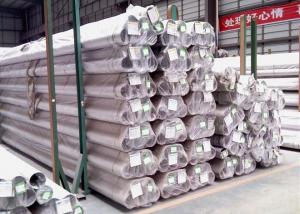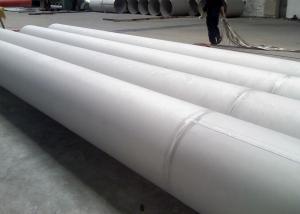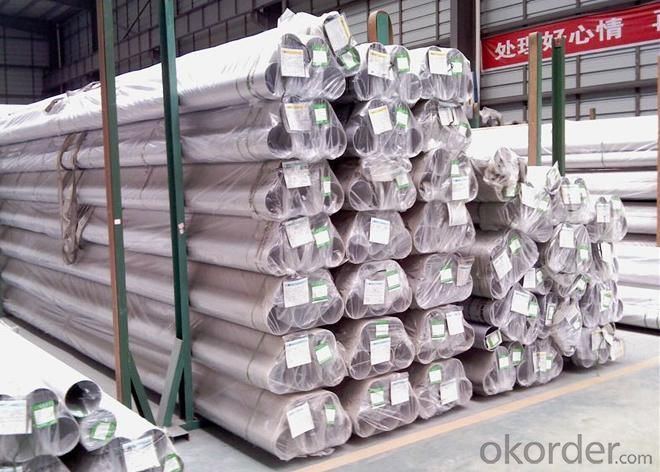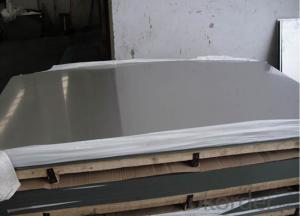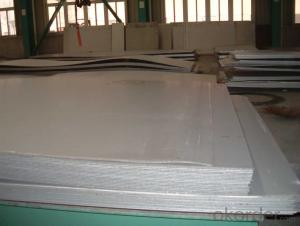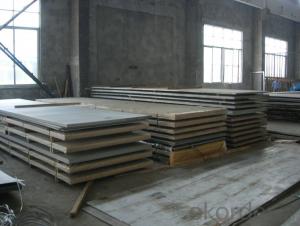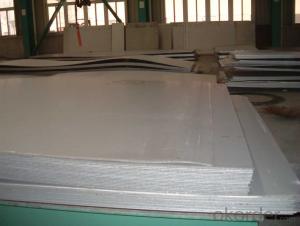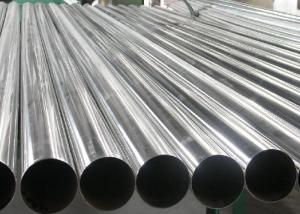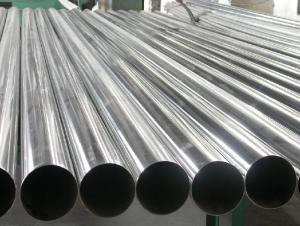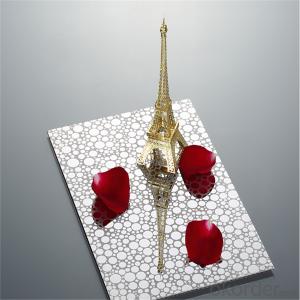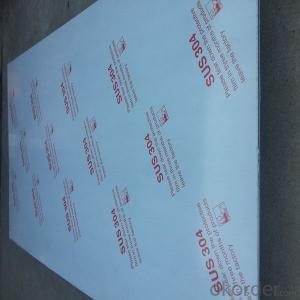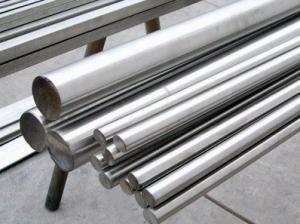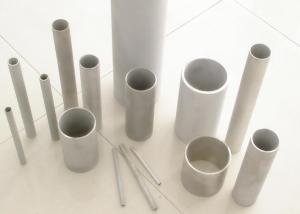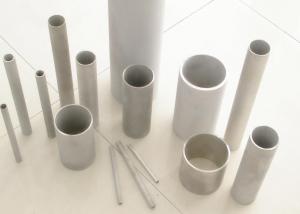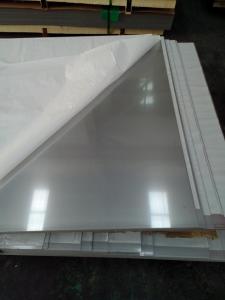304L Stainless Steel Welded Pipe
- Loading Port:
- China Main Port
- Payment Terms:
- TT or LC
- Min Order Qty:
- 5 Tons m.t.
- Supply Capability:
- 2000 Tons Per Month m.t./month
OKorder Service Pledge
OKorder Financial Service
You Might Also Like
Best Price For 304L Stainless Steel Welded Pipe
Application Of Best Price For 304L Stainless Steel Welded Pipe
Industrial Fluid Conveying
Boiler,Heat Exchanger and condenser
Sanitary and Thin-wall water pipe
Oil and Gas transportation etc.
Sizes Of Best Price For 304L Stainless Steel Welded Pipe
| OUTER DIAMETER | OD | WALL THICKNESS | |||
| SCH5S | SCH5S | SCH5S | |||
N.B | NPS | mm | mm | mm | mm |
8 | 1/4' | 13.72 | - | - | 2.24 |
10 | 3/8' | 17.15 | - | - | 2.31 |
15 | 1/2' | 21.34 | 1.65 | 2.11 | 2.77 |
20 | 3/4' | 26.67 | 1.65 | 2.11 | 2.87 |
25 | 1' | 33.4 | 1.65 | 2.77 | 3.38 |
32 | 1-1/4' | 42.16 | 1.65 | 2.77 | 3.56 |
40 | 1-1/2' | 48.26 | 1.65 | 2.77 | 3.68 |
50 | 2' | 60.33 | 1.65 | 2.77 | 3.91 |
65 | 2-1/2' | 73.03 | 2.11 | 3.05 | 5.16 |
80 | 3' | 88.9 | 2.11 | 3.05 | 5.49 |
90 | 3-1/2' | 101.6 | 2.11 | 3.05 | 5.74 |
100 | 4' | 114.3 | 2.11 | 3.05 | 6.02 |
125 | 5' | 141.3 | 2.77 | 3.4 | 6.55 |
150 | 6' | 168.28 | 2.77 | 3.4 | 7.11 |
200 | 8' | 219.08 | 2.77 | 3.76 | 8.18 |
250 | 10' | 273.05 | 3.4 | 4.19 | 9.27 |
300 | 12' | 323.85 | 3.96 | 4.57 | 9.52 |
350 | 14' | 355.6 | 3.96 | 4.78 | 11.13 |
400 | 16' | 406.4 | 4.19 | 4.78 | 12.7 |
450 | 18' | 457.2 | 4.19 | 4.78 | 14.27 |
500 | 20' | 508 | 4.78 | 5.54 | 15.09 |
550 | 22' | 558.8 | 4.78 | 5.54 | 15.09 |
600 | 24' | 609.6 | 5.54 | 6.35 | 17.48 |
650 | 26' | 660.4 | 5.54 | 7.92 | 17.48 |
700 | 28' | 711.2 | 5.54 | 7.92 | 17.48 |
750 | 30' | 762 | 6.35 | 7.92 | 17.48 |
800 | 32' | 812.8 | - | 7.9 | 17.48 |
850 | 34 | 863.6 | - | 7.92 | 17.48 |
900 | 36' | 914.4 | - | 7.92 | 19.05 |
1000 | 40' | 1016 | - | 9.53 | - |
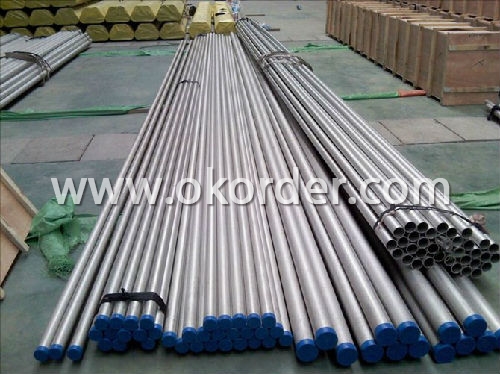
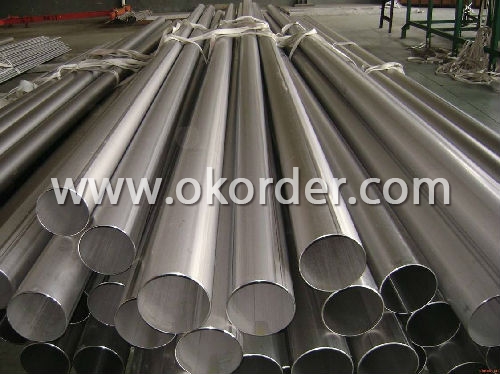
- Q: Can stainless steel sheets be used for brewery tanks?
- Yes, stainless steel sheets can be used for brewery tanks. Stainless steel is a commonly used material in the brewing industry due to its excellent corrosion resistance, strength, and hygienic properties. It is non-reactive, which means it does not interact with the beer or alter its taste, ensuring the purity and quality of the final product. Stainless steel sheets can be formed and welded to create tanks of various shapes and sizes, making them suitable for a wide range of brewing applications. Additionally, stainless steel is easy to clean, maintain, and sanitize, which is vital for maintaining the cleanliness and sterility of brewery tanks. Overall, stainless steel sheets are an ideal choice for brewery tanks due to their durability, chemical resistance, and hygienic properties.
- Q: Are stainless steel sheets suitable for architectural louvers or screens?
- Yes, stainless steel sheets are suitable for architectural louvers or screens due to their durability, corrosion resistance, and aesthetic appeal. They provide a sleek and modern look while also offering protection against weather elements, making them a popular choice for architectural applications.
- Q: What are the color options for stainless steel sheets?
- Stainless steel sheets are typically available in a range of color choices, contingent upon the particular finish employed on the surface. The prevalent color selections for stainless steel sheets encompass silver, representing the inherent hue of stainless steel, in addition to black, gold, bronze, and copper. These hues are attained through techniques like powder coating, PVD coating, or chemical treatments, which establish a thin coating on the sheet's surface. The assortment of color choices grants enhanced design flexibility and the ability to select hues that harmonize with diverse aesthetics and applications.
- Q: Can stainless steel sheets be cut to size?
- Yes, stainless steel sheets can be cut to size using various cutting methods such as shearing, laser cutting, or waterjet cutting.
- Q: Are stainless steel sheets suitable for food storage containers?
- Food storage containers made from stainless steel sheets are a suitable option. Many people prefer stainless steel for food storage containers because it offers numerous advantages. To begin with, stainless steel is non-reactive, meaning it doesn't interact with or release any harmful chemicals into the food, thus maintaining its taste and quality. Moreover, stainless steel is resistant to corrosion, rust, and staining, making it a durable and long-lasting material for food storage containers. It is also effortless to clean and maintain as it doesn't absorb any odors or flavors from previously stored food items. Additionally, stainless steel is hygienic since it doesn't harbor bacteria or other pathogens, ensuring the safety and healthiness of your food. In conclusion, stainless steel sheets are an excellent choice for food storage containers due to their suitability for food contact, durability, and hygienic properties.
- Q: What is the difference between cold rolled and hot rolled stainless steel sheets?
- The main difference between cold rolled and hot rolled stainless steel sheets lies in the manufacturing process and the resulting surface finish. Cold rolled stainless steel sheets are produced by rolling the steel at room temperature. This process involves passing the steel through a series of rollers to reduce its thickness and achieve the desired shape. Cold rolling results in a smoother and more refined surface finish, with less surface defects and a tighter tolerance on thickness. The cold rolling process also enhances the strength and hardness of the stainless steel sheet. On the other hand, hot rolled stainless steel sheets are manufactured by heating the steel above its recrystallization temperature and then rolling it through a series of rollers. This process is typically carried out at a higher temperature than cold rolling, which results in a rougher surface finish. Hot rolling is generally used for thicker sheets and produces a more variable thickness and hardness compared to cold rolling. In terms of applications, cold rolled stainless steel sheets are commonly used in industries that require precise measurements, such as automotive, aerospace, and construction. The smoother surface finish of cold rolled sheets makes them suitable for applications where aesthetics and surface quality are important. Hot rolled stainless steel sheets, on the other hand, are often used in applications where strength and durability are the primary requirements, such as structural components in buildings, industrial machinery, and equipment. In summary, the main differences between cold rolled and hot rolled stainless steel sheets are the manufacturing process, resulting surface finish, and their respective applications. Cold rolled sheets offer a smoother surface finish and tighter thickness tolerance, while hot rolled sheets have a rougher surface finish and are more suitable for applications requiring strength and durability.
- Q: How do I prevent stress relaxation on stainless steel sheets?
- Stainless steel sheets undergo stress relaxation when exposed to high temperatures or constant stress. To prevent stress relaxation in stainless steel sheets, the following measures can be taken: 1. Carefully choose the stainless steel grade: Different grades of stainless steel have different resistance to stress relaxation. Opt for a grade with high resistance, such as austenitic stainless steels like Type 304 or Type 316. 2. Avoid excessive temperatures: Operate the stainless steel sheets within the recommended temperature range. Exposing them to temperatures beyond this range can accelerate stress relaxation. Ensure that the operating temperature remains within the permissible limits. 3. Control stress levels: Minimize stress during fabrication and installation. Do not excessively bend, stretch, or deform the material, as this introduces stress. Properly design and fabricate components to reduce stress concentration points. 4. Consider post-weld heat treatment: If the stainless steel sheets are welded, consider performing heat treatment after welding. This involves subjecting the welded area to controlled heating and cooling cycles to relieve residual stresses and minimize the potential for stress relaxation. 5. Reduce exposure to aggressive environments: While stainless steel sheets are corrosion-resistant, exposure to aggressive chemicals or environments can accelerate stress relaxation. Avoid prolonged exposure to corrosive substances or environments that can compromise the material's integrity and cause stress relaxation. 6. Regularly inspect and maintain: Periodically inspect the stainless steel sheets for signs of stress relaxation, such as deformation, cracks, or dimensional changes. Regular maintenance and timely repairs can help identify and address any issues before they worsen. 7. Seek advice from experts: If unsure about preventing stress relaxation in stainless steel sheets, consult metallurgical experts or stainless steel manufacturers. They can provide guidance on the best practices and materials to ensure long-term performance and prevent stress relaxation. By implementing these preventive measures, the risk of stress relaxation in stainless steel sheets can be significantly reduced. This ensures their durability and maintains their structural integrity over time.
- Q: Can stainless steel sheets be used in high-pressure applications?
- Stainless steel sheets are indeed applicable in high-pressure scenarios. Renowned for its remarkable resistance to corrosion and impressive strength, stainless steel is suitable for a variety of industrial uses, especially those involving high-pressure conditions. Its exceptional strength enables it to endure the force exerted by high-pressure fluids or gases without distorting or breaking. Moreover, stainless steel sheets can be shaped and sized as desired, facilitating their utilization in a wide array of high-pressure applications such as pressure vessels, pipelines, hydraulic systems, and heat exchangers. All in all, stainless steel sheets are a dependable and long-lasting option for high-pressure circumstances due to their inherent strength and corrosion resistance characteristics.
- Q: What are the different types of stainless steel sheet edge treatments available?
- There are several different types of stainless steel sheet edge treatments available, each offering unique benefits and aesthetic options. 1. Mill Edge: This is the most common type of edge treatment, where the stainless steel sheet is produced with a straight, unfinished edge. It is cost-effective and suitable for most applications where appearance is not a primary concern. 2. Slit Edge: In this treatment, the stainless steel sheet is slit to the desired width, resulting in a smooth edge. Slit edge sheets are commonly used in applications where a clean, burr-free finish is required, such as in food processing or pharmaceutical industries. 3. Deburred Edge: This treatment involves removing any burrs or sharp edges from the stainless steel sheet. It provides a smooth, safe edge and is often used in applications where safety is a concern, such as in architectural or automotive applications. 4. Rolled Edge: A rolled edge treatment involves bending the stainless steel sheet to create a rounded edge. This type of treatment is commonly used in applications where safety and aesthetics are important, such as in kitchen appliances or decorative pieces. 5. Beveled Edge: In a beveled edge treatment, the stainless steel sheet is cut at an angle to create a diagonal edge. Beveled edges are often used in architectural applications to create a smooth transition between different materials or to enhance the overall design. These are just a few examples of the different types of stainless steel sheet edge treatments available. The choice of edge treatment will depend on the specific requirements of the application, including functionality, safety, and aesthetics.
- Q: What are the different types of patterned finishes available for stainless steel sheets?
- There are several different types of patterned finishes available for stainless steel sheets, each offering a unique aesthetic and functionality. Some of the most common patterned finishes include: 1. Diamond: This pattern features a raised diamond-shaped texture on the surface of the stainless steel sheet. It provides enhanced grip and is commonly used in applications where slip resistance is important, such as flooring or industrial equipment. 2. Linen: The linen finish is characterized by a textured pattern that resembles woven fabric. It adds a subtle elegance to stainless steel sheets and is often used in interior design applications, such as wall cladding or decorative panels. 3. Checkered: This pattern consists of a grid of raised squares or rectangles, giving the stainless steel sheet a checkerboard-like appearance. The checkered finish is often used for decorative purposes, as it adds visual interest and can create a retro or industrial look. 4. Bead Blasted: In this finish, the stainless steel sheet is blasted with fine glass beads to create a matte texture with a slightly rough surface. Bead blasted finishes are commonly used in architectural applications, as they provide a modern and uniform appearance while reducing glare and fingerprints. 5. Etched: Etched finishes involve chemically altering the surface of the stainless steel sheet to create intricate patterns or designs. This process can achieve a wide range of effects, from simple line patterns to complex images. Etched finishes are often used in decorative applications, such as signage, artwork, or custom designs. 6. Sandblasted: Similar to bead blasting, sandblasting involves using high-pressure sand or other abrasive materials to create a textured surface on the stainless steel sheet. This finish provides a rougher and more pronounced pattern compared to bead blasting, making it suitable for applications that require a more industrial or rugged appearance. 7. Mirror: While not technically a patterned finish, the mirror finish is worth mentioning as it is a popular choice for stainless steel sheets. This finish is achieved through a series of polishing and buffing processes, resulting in a highly reflective surface that resembles a mirror. The mirror finish is commonly used in architectural elements, such as cladding, decorative accents, or reflective surfaces. Overall, the choice of patterned finish for stainless steel sheets depends on the desired aesthetic, functionality, and specific application requirements. Each pattern offers a distinct look and texture, allowing for endless possibilities in design.
1. Manufacturer Overview
| Location | Zhejiang,China |
| Year Established | 2000 |
| Annual Output Value | Above US$8.3 Million |
| Main Markets | Europe, America |
| Company Certifications | ISO9001:2000 |
2. Manufacturer Certificates
| a) Certification Name | |
| Range | |
| Reference | |
| Validity Period |
3. Manufacturer Capability
| a) Trade Capacity | |
| Nearest Port | Shanghai |
| Export Percentage | 30% |
| No.of Employees in Trade Department | 30 People |
| Language Spoken: | English;Chinese |
| b) Factory Information | |
| Factory Size: | Above 80,000 square meters |
| No. of Production Lines | Above 7 |
| Contract Manufacturing | OEM Service Offered;Design Service Offered |
| Product Price Range | Average |
Send your message to us
304L Stainless Steel Welded Pipe
- Loading Port:
- China Main Port
- Payment Terms:
- TT or LC
- Min Order Qty:
- 5 Tons m.t.
- Supply Capability:
- 2000 Tons Per Month m.t./month
OKorder Service Pledge
OKorder Financial Service
Similar products
Hot products
Hot Searches
Related keywords
